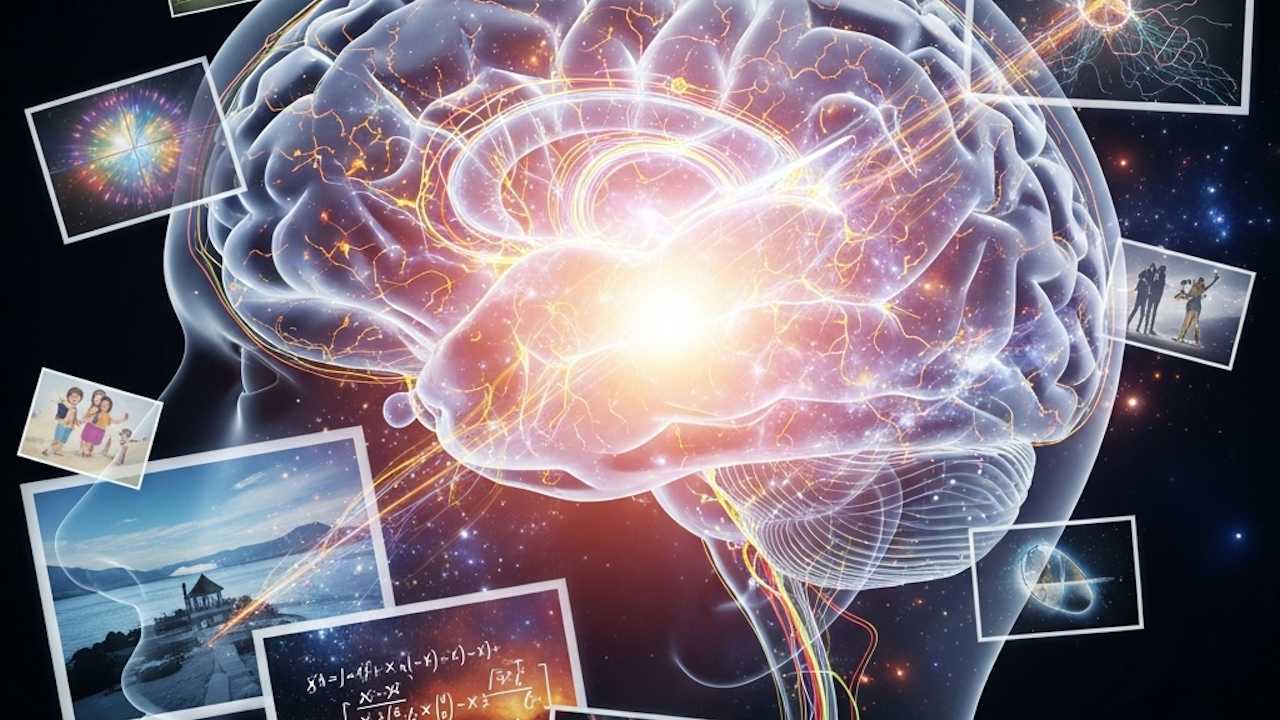“Photographic memory,” the popular notion of recalling images with perfect, long-lasting detail as if imprinted on a photograph, remains a captivating yet scientifically elusive phenomenon. While many people use the term loosely to describe a particularly good memory, the true nature of this ability, and why some individuals might possess it to a greater degree, is a complex area of ongoing research and debate.
At the heart of the discussion lies the distinction between “photographic memory” and the more studied phenomenon of “eidetic memory.” Eidetic memory refers to the ability to retain a visual image in vivid detail for a short period after seeing it, sometimes described as a lingering “afterimage” that can be scanned and described. This is observed more frequently in children, with estimates suggesting it might occur in a small percentage of young individuals, but it typically diminishes with age. Crucially, eidetic memory is generally a short-term phenomenon, and the detailed recall fades within minutes.
“Photographic memory,” on the other hand, implies a long-term, almost perfect retention of visual information, allowing someone to recall details weeks, months, or even years later with the same clarity as the initial viewing. Despite anecdotal accounts and popular culture portrayals, conclusive scientific evidence for the existence of true photographic memory in adults is lacking. Many individuals who claim such abilities often employ mnemonic strategies, highly developed visual-spatial skills, or exhibit exceptional focus rather than possessing a literal “photographic” imprint in their minds.
However, the spectrum of human memory is vast, and some individuals do exhibit remarkably superior memory abilities that might shed light on the potential for heightened recall. One such phenomenon is Highly Superior Autobiographical Memory (HSAM), also known as hyperthymesia. Individuals with HSAM possess an extraordinary ability to recall details of their own life experiences, including specific dates, events, and personal interactions, with remarkable accuracy. While their exceptional memory is primarily focused on autobiographical information rather than visual scenes or text, research into HSAM offers insights into the neural mechanisms that can underpin exceptional memory capacity.
Studies on individuals with HSAM have revealed some interesting neurological correlates. Some research suggests increased activity in certain brain regions associated with memory retrieval and autobiographical recall, such as the medial prefrontal cortex, temporoparietal junction, and hippocampus. Additionally, some studies have noted structural differences in brain areas and a tendency towards obsessive behaviors, such as compulsive journaling, which might contribute to the detailed encoding and retrieval of personal memories. However, it’s important to note that HSAM is distinct from the traditional concept of photographic memory, as it doesn’t necessarily involve the vivid visual “replay” often associated with the latter.
Another related area of interest is the role of genetics in memory capabilities. While there is no specific “photographic memory gene,” research suggests that genetic variations can influence general memory performance. Genes involved in neurotransmitter systems, such as dopamine, which plays a crucial role in learning and memory, and genes interacting with molecules like CREB protein, essential for long-term memory formation, have been implicated in individual differences in memory abilities. It’s plausible that a combination of genetic predispositions might contribute to enhanced memory capacity in some individuals, although the precise mechanisms and their potential link to something resembling photographic memory remain unclear.
Furthermore, the way individuals process and encode information could play a significant role in exceptional recall. People with highly effective memories often demonstrate a keen ability to pay attention to detail and organize information in a meaningful way. They might unconsciously employ strategies that enhance encoding, making the information more accessible for later retrieval. This could involve creating strong associations, visualizing information, or using existing knowledge frameworks to integrate new data. While not photographic in the literal sense, these enhanced processing abilities can lead to recall that appears remarkably detailed.
The development of language skills has also been hypothesized to play a role in the decline of eidetic imagery as children age. As verbal and abstract thinking abilities develop, individuals may rely less on purely visual memory strategies. This suggests that the way we learn to process and represent information can influence the type and fidelity of our memories.
In conclusion, while the popular idea of photographic memory as a perfect, long-lasting visual recall remains largely unproven in scientific research, some individuals exhibit extraordinary memory abilities, such as eidetic memory in childhood and highly superior autobiographical memory in adulthood. The underlying reasons for these exceptional capabilities are likely multifaceted, involving a complex interplay of neurological factors, genetic predispositions, and cognitive strategies in how information is processed and encoded. Further research into these areas may one day shed more light on the mechanisms that allow some people to achieve remarkable feats of memory, even if a true “photographic memory” in the popular sense remains an intriguing enigma.

